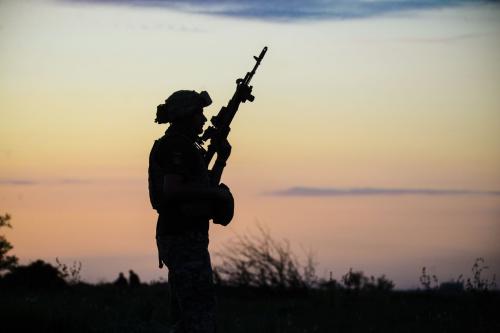It took seven months of tough bargaining with Islamabad for the United States to get Pakistan to reopen its border with Afghanistan to NATO supply trucks. Until the border closed last year, about 5,000 trucks a month had plowed their way from the Pakistani port city of Karachi, through dusty Baluchistan, around the Taliban-infested switchbacks of the Khyber Pass, and on to Bagram, Kandahar, and other NATO logistical hubs in Afghanistan. That came to a halt in November, after a U.S. air raid mistakenly killed 24 Pakistani soldiers and Islamabad retaliated by suspending NATO traffic. It would reopen the border, it said, only if the United States both apologized and agreed to pay much higher transport fees for the NATO trucks traversing its territory. Islamabad eventually dropped the fee demand, but it did induce U.S. Secretary of State Hillary Clinton to say sorry.
After the November shutdown of the Pakistan-Afghanistan border, NATO reoriented its supply routes to northern Afghanistan through a series of roads in Central Asia, which make up what is known as the Northern Distribution Network (NDN). The seven-month total dependence on the northern transportation routes, which are circuitous and treacherous, cost the United States hundreds of millions of dollars and much heartache. Far from being a thing of the past, the troubles associated with the NDN are here to stay: even after the reopening of the border with Pakistan, use of the NDN will remain crucial as NATO starts to ship home equipment as part of the drawdown this summer.
By the end of 2014, NATO needs to remove about 100,000 shipping containers full of equipment and 50,000 wheeled vehicles from Afghanistan; it will leave behind any unused fuel. NATO officials point out that in order for all International Security Assistance Force (ISAF) military equipment to be removed from Afghanistan in time, a container would have to leave the country every seven minutes, 24 hours a day, seven days a week, starting now — a tough order. Many of those containers and vehicles will have to travel along the northern route. For its part, ISAF is still counting on removing at least a third of its cargo in Afghanistan through Central Asia.
The spine of the NDN is a jagged, potholed road that leaves Kabul for Kunduz, the capital city of Kunduz province, which borders Tajikistan, and then continues on to Central Asia. The privilege of using the route does not come cheap: the United States and ISAF recently renegotiated their transshipment agreements with Kazakhstan, Kyrgyzstan, and Uzbekistan to permit two-way transit of non-lethal supplies (i.e., not armored vehicles or guns) through their territories. In addition, all three now allow transport planes carrying NATO soldiers to enter their airspace. Negotiations still continue, however, on a host of unresolved issues, such as expanded access to airspace and airports, fees, alternate routes, and the removal of restrictions on what type of military cargo can be transported. Meanwhile, the United States is also locked in talks with Russia about similar issues, such as the establishment of an air hub for Europe-bound cargo planes. Like its Central Asian neighbors, Russia has agreed to allow non-lethal equipment to be transported through its territory into Afghanistan, but NATO would like to see the agreement expanded.
In return for permitting tens of thousands of vehicles carrying ISAF military equipment to transverse their territory, the Central Asian countries have demanded, and received, huge payoffs. ISAF has not released details of its most recent accords with them, from June 2012. But, previously, each truck traveling through their territory had cost around $1,250 — about five times what Pakistan had charged. And Uzbekistan, for example, has sought a 50 percent surcharge on the use of its major rail link to Afghanistan.



Commentary
Stuck in the Mud: The Logistics of Getting Out of Afghanistan
July 18, 2012